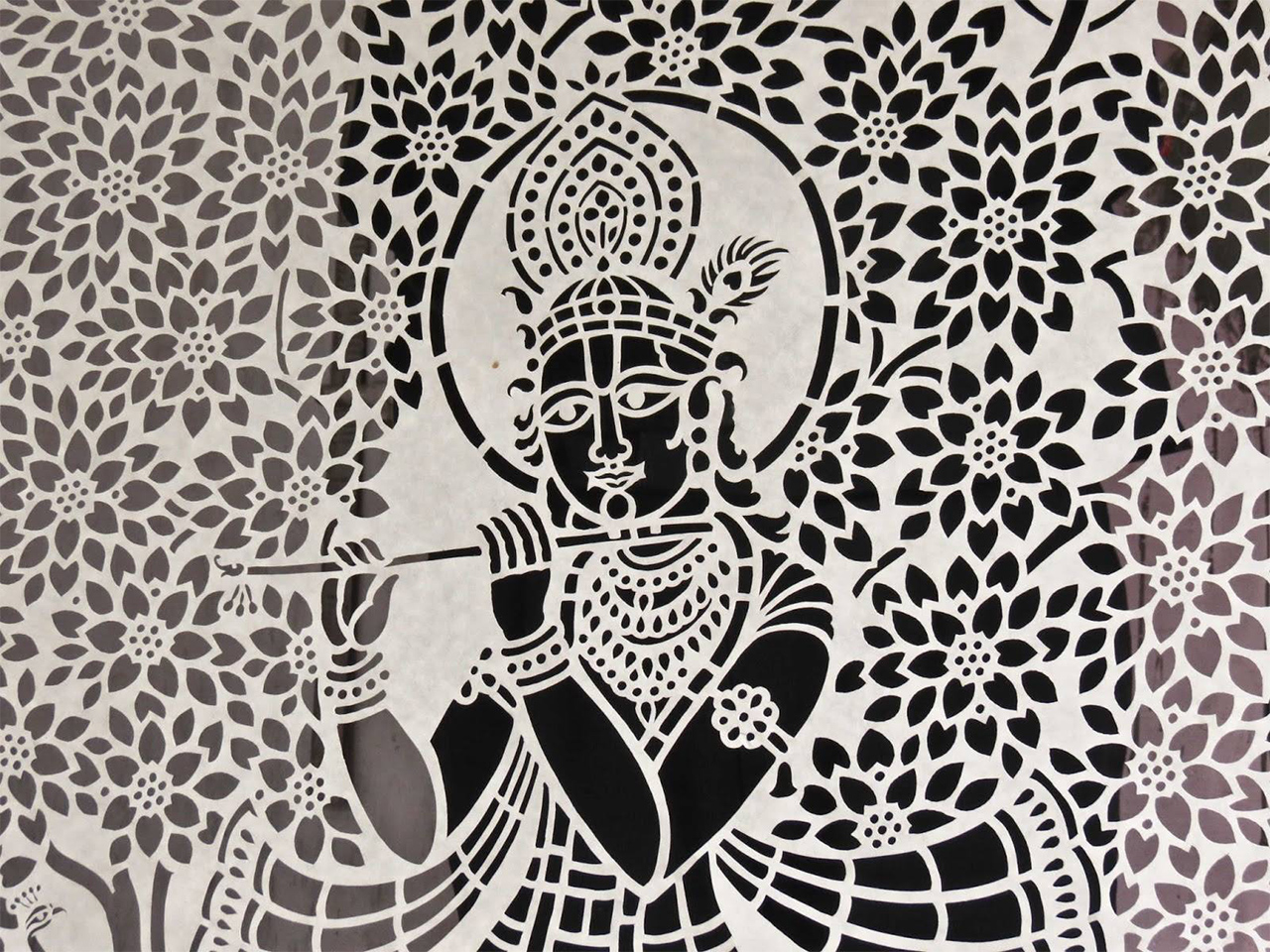
We really cannot imagine our lives without paper. The utility and benefits of paper are beyond comparison. Paper in various forms is used in so many ways that it might be difficult to keep a tab or count of its presence. However, trying to restrict its vast scope, let us take a look at some of the traditional artistry and crafts that are associated with paper in India.
As a child, I remember folding the paper along the edges and then cutting shapes or designs on each fold. With each successive layer of the fold, the cuttings along the edges became tinier and tinier, until it was impossible to cut the paper any further. What looked like one small, crumbled, folded sheet of paper, underwent a drastic and incredible change when it was opened up, one fold at a time. The paper with its many cuttings along the edge was a stenciled wonder and delicate piece of art.
Of course, this childish art or craft piece is just one of the many exercises that can create skilled artistry from just a sheet of paper. Similarly, origami is one of the most popular paper arts that use only the paper to create magical art. Yet, in India too, paper arts and crafts have been prevalent for long although, these styles also use other materials to enhance the art form and make them more beautiful than they already are.
History of Paper Crafts in India

It is really hard to trace the history of paper crafts in India. It is understood that paper replaced the palm leaf used in ancient times, and the Arabs learned the art of making paper from the Chinese in the 8th century. The oldest known archaeological fragments of paper was found in the 2nd century BCE, in China. The Persian name for paper is kagaz, which became popular in India by the 14th century. Under the Mughal rule, the paper was extensively used both in royal and administrative works, strikingly in the form of farmans or scrolls of messages. It was also during this time that paper craftsmen lived together in localities known as the ‘kagazi mohallas’.
Different Types of Paper Crafts in India

Paper crafts cover a large ambit of artistry ranging from paper toys, stencils, paper cuts to papier-mâché items. Paper kites, wind wheels, puppets, drums, etc. are very common toys that are easily available with hawkers or sellers on our streets or public places. Due to their ubiquitous presence, most of us tend to ignore the crafting skills that go into turning sheets of paper into viable toys or utility items. Khamp, for example, is the technique used to make kites, using paper along with bamboo strips.
Sanjhi is another paper art form that is popular in Matura and Vrindavan. A highly decorative craft, the paper is cut with special scissors into intricate designs, which depict the tales of Lord Krishna. Sanjhi is primarily used to create Rangolis in temples, though it is also used as decorative frames in homes.
Papier-mâché in India

The one paper craft that clearly stands out is, however, papier-mâché. A wonderfully unique art form, the technique involves using waste paper soaked in water along with other materials, such as adhesive solution and starch. The mixture is then assembled layer after layer in the desired shape and size, to create a thick component, which is then dried and made ready for use.
It was during the Mughal era that the papier-mâché was extensively used for both artistic and functional needs. It was even incorporated in wooden designs and was used to create a variety of products ranging from palanquins, doors, windows, bedsteads, and more. One can still find the artistry along with the panels and ceilings at the Shah Hamdan Mosque in Fatehkadal and the Mughal Gardens in Srinagar.

Kashmir is where the papier-mâché is believed to have originated. Mir Sayyid Ali Hamadani brought this handicraft to Kashmir in the 14th century. Locally known as Kar-i-qalamdan and Kar-i-munaqqash, the craft was used for ornamentation of pen cases and smooth surfaces. However, today the craft has evolved and is used to make various items, such as vases, boxes, models, trays, lamp bases, cups, bowls, candles, screens, frames, etc.
Though Kashmiri papier-mâché is most popular, other states that are also known for the skill include Madhya Pradesh, Rajasthan, Odisha, Bihar, West Bengal, Kerala, and Tamil Nadu. The craft is used for various local and cultural items, such as large figurines in temples based on Kathakali, in masks by Chhau dancers and as humans, birds, and animal figures.
Paper Crafts in Socio-economic-religious Affairs
As with all crafts or arts in India, paper crafts too find themselves intricately associated with the social and religious rituals and ceremonies. Whether it is the burning of the paper fireworks and effigies during Dussehra or the Tazia designed during the month of Muharram, these paper crafts are an essential part of the social and cultural landscape of the country.

Paper in itself is extremely useful for decorations, gift wrappings, quilling, cutworks, etc. There is a wide range of possibilities that can find creative expression using paper. Besides, recycled and handmade paper are also huge hits amongst eco-conscious connoisseurs. Yet, the eco-friendly paper craftsmanship industry in India is facing competition from machine-made products and factory manufacturing. With livelihoods and heritage at stake, maybe it is worth recognizing the craftsmen and their inherent talents in converting a thin sheet of paper into exquisite and utilitarian art.






Hey, very informative but i think you forgot to mention quilling in this one.